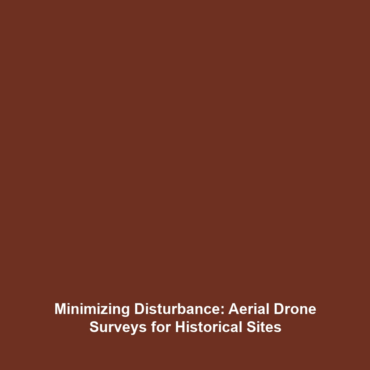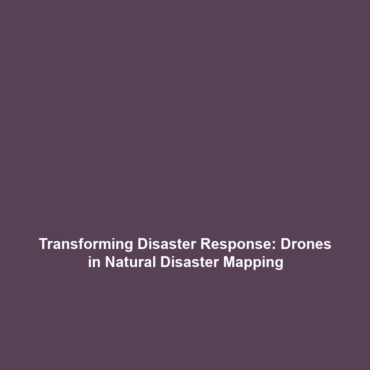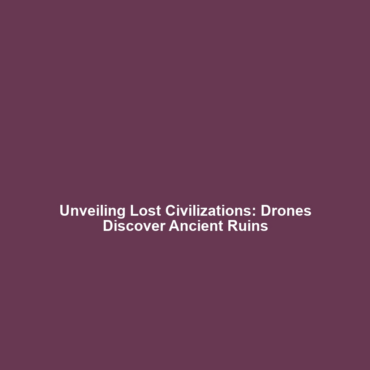How Aerial Drone Surveys Minimize Disturbance to Fragile Historical Locations
Introduction
Aerial drone surveys have become invaluable tools in the preservation of fragile historical locations. Utilizing advanced drone technology, researchers and archaeologists can conduct extensive surveys without the physical disturbances that traditional methods often entail. This innovation not only safeguards the integrity of these sites but also allows for a more thorough collection of data, enhancing our understanding of historical landscapes. In the context of Drones in Science, aerial surveys exemplify how technology can support environmental stewardship and heritage conservation.
Key Concepts
Understanding how aerial drone surveys minimize disturbance to fragile historical locations requires an exploration of several key concepts:
- Non-Destructive Methodology: Drones operate at considerable heights, enabling data collection without direct contact with the site’s surface.
- High-Resolution Imaging: Equipped with advanced cameras and sensors, drones can capture high-resolution images and topographical data, providing detailed insights without altering the site.
- Remote Sensing: Aerial drone surveys utilize remote sensing technologies to collect environmental data, helping to monitor the health of historical locations.
These principles illustrate why aerial drone surveys are critical in the field of Drones in Science, merging technological innovation with historical preservation.
Applications and Real-World Uses
The applications of aerial drone surveys in protecting fragile historical locations are diverse and impactful:
- Archaeological Surveys: Drones have been employed to map archaeological sites in remote locations, minimizing the risk of foot traffic that could damage sensitive areas.
- Monitoring and Documentation: Regular drone flights provide ongoing monitoring of historical sites, documenting changes over time without physical intervention.
- Public Engagement: Drones enable the creation of engaging visual content, helping to raise public awareness about the importance of preserving historical locations.
Current Challenges
While aerial drone surveys offer numerous benefits, several challenges must be addressed:
- Regulatory Hurdles: Navigating the complex regulations surrounding drone flight can impede research activities.
- Technical Limitations: Issues related to battery life and sensor capabilities can restrict the effectiveness of drone surveys.
- Data Interpretation: The sheer volume of data collected requires skilled personnel to analyze and interpret findings accurately.
Future Research and Innovations
The future of aerial drone surveys in the preservation of fragile historical locations is bright, with several promising innovations on the horizon:
- AI and Machine Learning: Next-generation drones may incorporate AI technologies to enhance data collection and analysis, providing more precise mapping and modeling of historical sites.
- Improved Battery Technology: Advances in battery technology may extend flight times, allowing for more extensive surveys.
- Enhanced Sensor Technologies: Future drones could utilize superior sensors that increase the resolution and range of data collected.
Conclusion
Aerial drone surveys represent a transformative approach to minimizing disturbance to fragile historical locations, fitting seamlessly within the growing field of Drones in Science. As these technologies continue to evolve, their implications for heritage preservation will be profound. Researchers, policymakers, and enthusiasts alike are encouraged to support and engage with ongoing developments in this area. For more insights, consider exploring our articles on Drones in Environmental Science and Historical Preservation Techniques.


